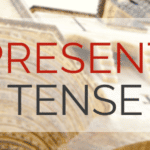
Four French verbs represent a huge portion of verbs used by native speakers. These are usually the first four that beginning French learners are taught. I think of them as “the core four.” Two are passive (“to be” and “to have”), and two are active (“to do” and “to go”). The first two verbs are critical to form the French past tenses, as well.
For each of the four verbs, I also list where each one ranks in the Frequency Dictionary of French to provide further context on how frequently these verbs are used.
Conjugating these four verbs
In many languages, the most commonly used verbs have developed irregular conjugations over the centuries, and French is no exception. You might recognize some patterns in their verb forms as compared to regular verbs, but none of them follow a completely predictable pattern, meaning you will have to learn each unique verb conjugation for these verbs.
How to Read the Conjugation Charts
The charts below are set up how verb conjugations are taught in many languages, including this website. They offer a quick and easy way to tell which type of subject or pronoun matches which verb conjugation. The three columns represent what “person” the tense is (1st person and first row: I; 2nd person and second row: you; and 3rd person and third column: others). The two columns represent whether the subject is singular (left column) or plural (right column)
The most important tense for you to learn first is the present tense, so the charts below all show the present tense conjugations.
1) Être (“to be”)
The most fundamental verb (#5 on the frequency list), not only is être useful in and of itself, it’s also used instead of avoir to form the past tense passé composé form with certain French verbs.
Être
| je suis | nous sommes |
| tu es | vous êtes |
| il/elle/on est | ils/elles sont |
Pronunciation note
When you say “vous êtes,” the s in vous should be pronounced (with a “z” sound).
2) Avoir (“to HaVe”)
Avoir (#8) is useful to talk about ownership, but it also is used in most sentences to form the passé composé and plus que parfait, in most cases.
AVOIR
| j’ai | nous avons |
| tu as | vous avez |
| il/elle/on a | ils/elles ont |
Pronunciation note
For the nous, vous, and ils/elles verb conjugations, you should be saying the final s (again, with a “z” sound) because the pronoun is in front of a verb that begins with a vowel.
Grammar Note
When you want to use avoir with negation (saying that you do not have something, for instance), what you don’t have switches from “a” or “an” something (un/une) to de (d’ in front a vowel).
3) Faire (“to make or do”)
Faire (#25) and its conjugations are used in many French phrases, in addition to being a useful action verb to know.
Faire
| je fais | nous faisons |
| tu fais | vous faîtes |
| il/elle/on fait | ils/elles font |
Pronunciation note
The nous and vous forms ‘ pronunciation is a little different from standard French pronunciation. The ai sound is not pronounced “ay” like in the other faire conjugations, or like j’ai and other words/phrases. Instead, the nous form, faisons, is pronounced “fuh-zohn,” and the vous form, faîtes, is pronounced “feht.”
4) Aller (“to go”)
Aller is the other main action verb to learn early on (#53). Aller is also useful because you can use it (in its conjugated form) to form “near future” statements (the equivalent of the English, “I am going to visit Switzerland,” for example) in place of the actual French future tense.
Aller
| je vais | nous allons |
| tu vas | vous allez |
| il/elle/on va | ils/elles vont |
Pronunciation note
For both the nous and vous conjugations, you should be saying the final s.
Grammar note
In French you go à (“to”) places. There are special rules if the place you are going to begins with a definite subject pronoun (le/la/les) If the place you are going is a feminine definite pronoun (la), you can go à la + [that place]. But if your destination begins with le, à + le becomes au. Similarly, à + les becomes aux.
Next Steps
Now that you’re familiar with (and hopefully practicing and mastering!) these four important French verbs, you’re ready to move on to the present tense.



